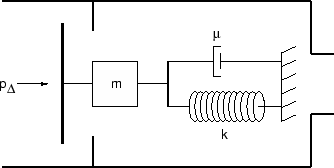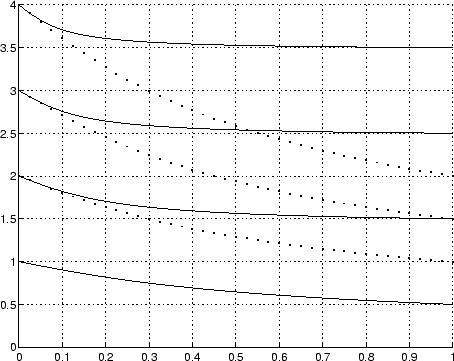



Next: Percussion Instruments
Up: Lectures
Previous: Brass Instruments
Woodwinds include the single-reed driven instruments (clarinets and saxophones), double-reed instruments (oboes, bassoons, english-horns), and ``air-reed'' instruments (flutes, piccolos, and recorders). The common element to all these instruments is their use of toneholes to vary the effective length of their air column.
If you wish to pursue a more in-depth analysis of woodwind instruments, perhaps for your class project, a unique collection of research materials is maintained here at CCRMA. The Musical Acoustics Research Library
(MARL) is a collection of independent archives or libraries assembled by distinguished groups or individuals in the field of musical acoustics research. Currently, MARL is comprised of the Catgut Acoustical Society Library, the Arthur H. Benade Archive, the John Backus Archive, and the John W. Coltman Archive. Our current understanding of woodwind instrument acoustic behavior owes much to the work of Arthur Benade, John Backus, and John Coltman.
- Cylindrical Bores: See Section on Brasses
- Conical Bores:
- Register Holes:
- A register hole or vent is designed to destructively interfere with the fundamental resonance of the air column and thus force oscillations at the next strongest resonance.
- The strength of a particular resonance can be reduced by locating a register hole at a point of maximum pressure for that mode and a point of zero pressure for the desired resonance.
- For clarinets, the register hole is ideally placed about 1/3 the distance from the reed tip to the first open hole. For saxophones and oboes, the register hole is ideally placed 1/2 the distance from the imaginary cone apex to the first open hole.
- The register hole also should be designed as an ``acoustic inertance or mass'', which will shift the frequency of the fundamental mode away from it's normal value. This is necessary for loud sounds that have many strong resonances. Simply reducing the strength of the fundamental in this case would not succeed in shifting the pitch because the cooperation of the higher partials would still support the weakened fundamental mode.
- Ideally, there would be a separate register hole for each fingering. Since this is not practical, comprimises in tuning must be made. A misplaced register hole will cause the second resonance frequency to sound sharp, in proportion to the distance from its ideal location.
- Reeds Driven Closed:
Figure 18:
The single-reed as a mechanical oscillator blown closed.
 |
- The reed functions as a pressure-controlled valve that admits a puff of air whenever the pressure is high in the mouthpiece.
- Positive pressure pulses reflected back from the far end of the horn tend to force the reed open ... positive feedback.
- The resonance frequency of the reed is typically between 2 - 3 kHz so that the reed always vibrates in its ``stiffness dominated'' region.
- The player can control the damping of the system via his/her lips.
- The player can indirectly control the mass of the system via the placement of his/her lips on the reed.
- Oscillations are favored when the air column has one or more resonances that correspond to the harmonics of the fundamental pitch.
- ``Air Reeds'':
- The air jet mechanism functions as a flow-controlled valve that admits a puff of air whenever the air flow at the embouchure hole is inward directed.
- The flow-controlled air stream collaborates with an air column to oscillate at frequencies corresponding to air column impedance minima.
- The player can control three parameters of the air jet - blowing pressure, length of the jet, and area of the lip opening - to affect register changes and other timbral effects.
- Most efficient excitation of the fundamental frequency takes place when the time for the air jet to travel across the embouchure hole is about half the period of oscillation.
- To sound the second register, the player increases the blowing pressure (to speed up the air jet) and/or moves the lips forward to decrease the jet length. At the same time, the lip opening may be decreased to maintain loudness and tuning.
- Toneholes change the effective length of an air column.
- The larger the hole, the more the effective length is changed.
- The effective length of a bore with open tone holes is found to vary with frequency. The air column ``acts'' longer at high frequencies than at low frequencies.
- A tonehole lattice acts as a filter which transmits high-frequency sound components but reflects low-frequency components.
- The cutoff frequency of the tonehole lattice is an important factor in determining the timbre of the instrument.

 ) and oboe bore (half-angle
) and oboe bore (half-angle
 ) occur at frequencies of 2.94/
) occur at frequencies of 2.94/ kHz and 3.87/
kHz and 3.87/ kHz, respectively, where
kHz, respectively, where  is the distance from the imaginary conical bore tip. However, they require transverse circular motion and thus are unlikely to be excited with any appreciable magnitude in musical instruments.
is the distance from the imaginary conical bore tip. However, they require transverse circular motion and thus are unlikely to be excited with any appreciable magnitude in musical instruments. are dependent on the boundary conditions at each end. A complete cone has discrete standing wave frequencies given by
are dependent on the boundary conditions at each end. A complete cone has discrete standing wave frequencies given by
 for
for
 , where
, where  is the speed of wave propagation in air.
is the speed of wave propagation in air.



